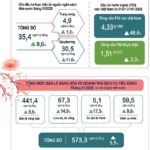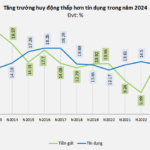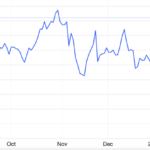Vietnam’s GDP is estimated to grow by 7.1% in 2024, a solid performance compared to the government’s target of 6.5%, supported by accommodative monetary policy and robust retail sales. However, recent data suggests a moderation, particularly in the real estate sector, which continues to face challenges despite initial signs of recovery.
Inflation stood at 3.6% year-on-year in January 2025, marking the sixth consecutive month below 4%. According to the General Statistics Office, transportation and food prices during the Lunar New Year holiday were the main drivers of inflation in January. Inflationary pressures may intensify in 2025 due to rising prices in the healthcare, housing, construction materials, and food sectors. The central bank could face a challenge if inflation picks up in Q2 2025, complicating economic recovery efforts. Standard Chartered economists expect CPI inflation to continue rising in the coming years.
Other key macroeconomic indicators for January showed adjustments in domestic and foreign data; however, electronics exports continued to improve.
Vietnam maintains a large trade surplus with the US market, and in the new context, it may be subject to closer scrutiny. While the trade balance remains stable, certain risks persist: the monthly trade surplus has been declining recently; proposed regulatory changes could disqualify some imported goods from being labeled “Made in Vietnam,” affecting supply chains; and the wave of global production shifts to Vietnam may also raise concerns about overcapacity and price pressures.
The Vietnamese dong (VND) remains tightly managed, helping to limit short-term exchange rate volatility. Despite fiscal deficits averaging around 2% of GDP over the past two decades, the Vietnamese economy has maintained a robust growth trajectory. The central bank may need to strengthen foreign exchange reserves to prevent excessive VND appreciation.
Tourism is expected to be a key growth driver, benefiting from a rise in international visitors and the return of Chinese tourists. Meanwhile, credit growth is projected at 16% in 2025, with loans increasing by 15.1% in 2024, although lending remains cautious.
Lower interest rates in the US could help limit capital outflows from Vietnam, but low imports from Vietnam remain a challenge. Additionally, commodity prices – particularly oil – continue to be a worrying risk.

Mr. Tim Leelahaphan, Senior Economist for Vietnam and Thailand, Standard Chartered Bank
|
“The government is focusing on boosting stronger economic growth, which could help maintain low-interest rates in the short term. However, we expect interest rates to gradually return to normalcy in Q2, with the State Bank of Vietnam (SBV) likely to raise by another 50 basis points in Q2 2025. Inflation, US Federal Reserve policy, and VND movements will play a crucial role, with SBV’s monetary policy decisions being key to maintaining economic stability and growth in 2025. To ensure sustainable growth, Vietnam needs to diversify its economy and enhance its resilience to natural disasters,” said Mr. Tim Leelahaphan, Senior Economist for Vietnam and Thailand, Standard Chartered Bank.
– 15:58 07/02/2025
The Art of Inflation: Unveiling January 2025’s CPI and Core Inflation Dance
Some localities adjusted healthcare service prices according to Circular No. 21/2024/TT-BYT, and there were increases in transportation and food prices due to higher travel and shopping demands during the Tet holiday. These were the main drivers of the 0.98% month-over-month rise in the consumer price index (CPI) for January 2025. Compared to January 2024, the CPI rose by 3.63%, while the core inflation rate for January 2025 increased by 3.07%.
The Growing Gap Between Credit and Deposits: A Record-Breaking Divide
While credit debt soared, banks’ capital mobilization lagged in 2024, creating an unprecedented gap between supply and demand.
“Vietnam’s Economy Surges Past Expectations in 2024: On Track to Lead ASEAN in the Coming Year?”
In 2024, Vietnam’s GDP is estimated to grow by 7.09%. This projected growth showcases the country’s thriving economy and highlights its potential as an emerging market. With a population of over 90 million and a rapidly developing landscape, Vietnam presents a plethora of opportunities for businesses and investors alike. The country’s economic expansion opens doors for new ventures, trade partnerships, and innovative endeavors, making it a captivating prospect for those seeking lucrative opportunities in Asia.





















